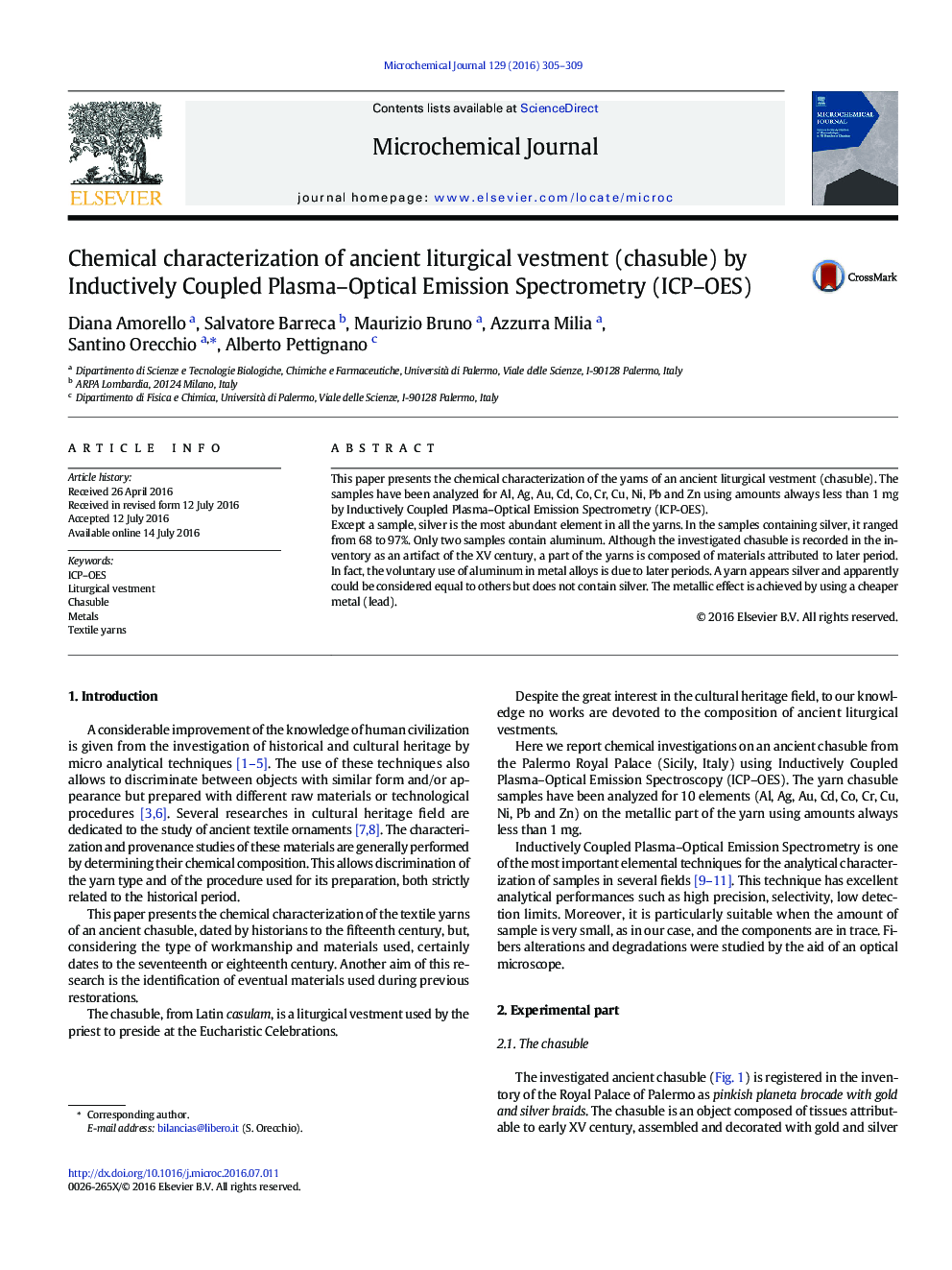| Article ID | Journal | Published Year | Pages | File Type |
|---|---|---|---|---|
| 1227623 | Microchemical Journal | 2016 | 5 Pages |
•The use of ICP-OES allows to discriminate between objects with similar appearance but chemically different;•The paper presents the first chemical characterization of ancient liturgical vestment yarns;•To perform the ICP–OES determinations from 0.2 to 1 mg of sample were sampled;•A yarn appears silver but the metallic effect is achieved by using a cheaper metal (Pb).
This paper presents the chemical characterization of the yarns of an ancient liturgical vestment (chasuble). The samples have been analyzed for Al, Ag, Au, Cd, Co, Cr, Cu, Ni, Pb and Zn using amounts always less than 1 mg by Inductively Coupled Plasma–Optical Emission Spectrometry (ICP-OES).Except a sample, silver is the most abundant element in all the yarns. In the samples containing silver, it ranged from 68 to 97%. Only two samples contain aluminum. Although the investigated chasuble is recorded in the inventory as an artifact of the XV century, a part of the yarns is composed of materials attributed to later period. In fact, the voluntary use of aluminum in metal alloys is due to later periods. A yarn appears silver and apparently could be considered equal to others but does not contain silver. The metallic effect is achieved by using a cheaper metal (lead).
